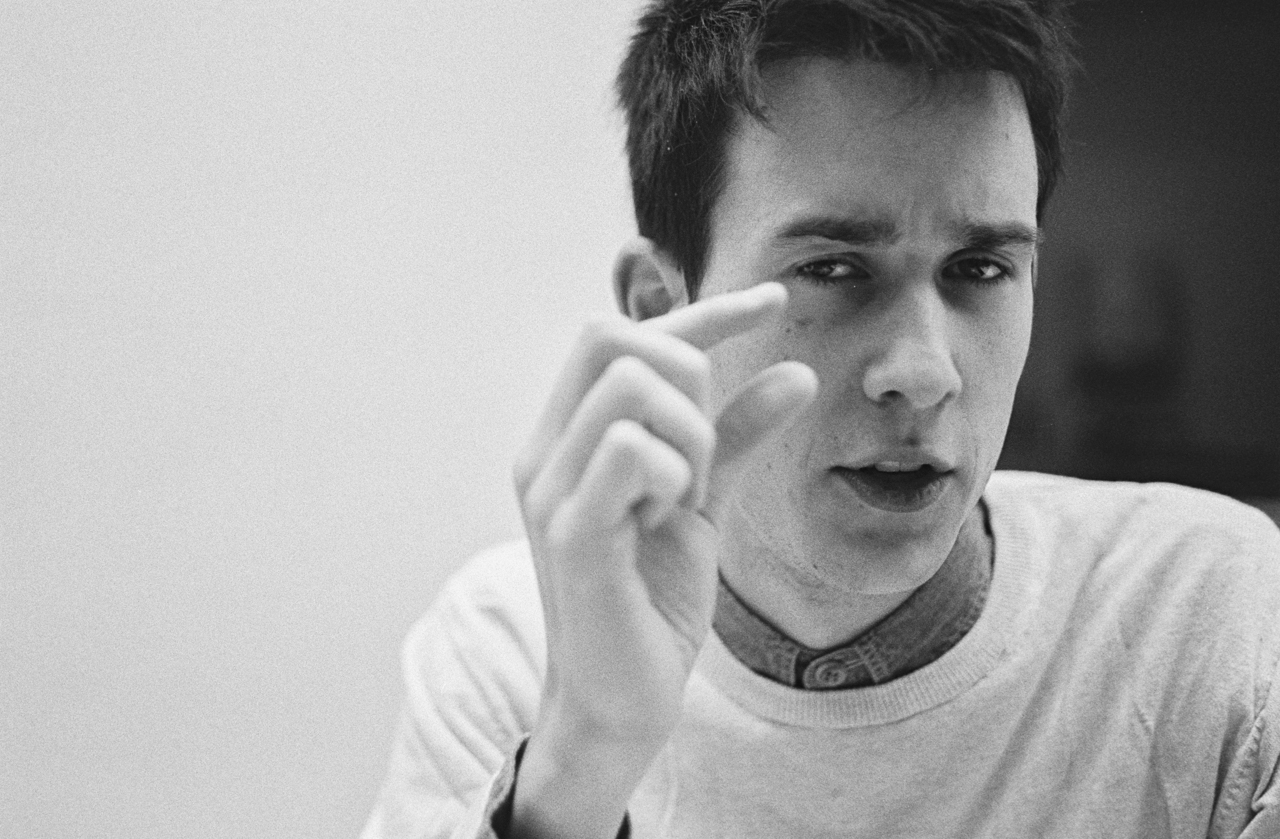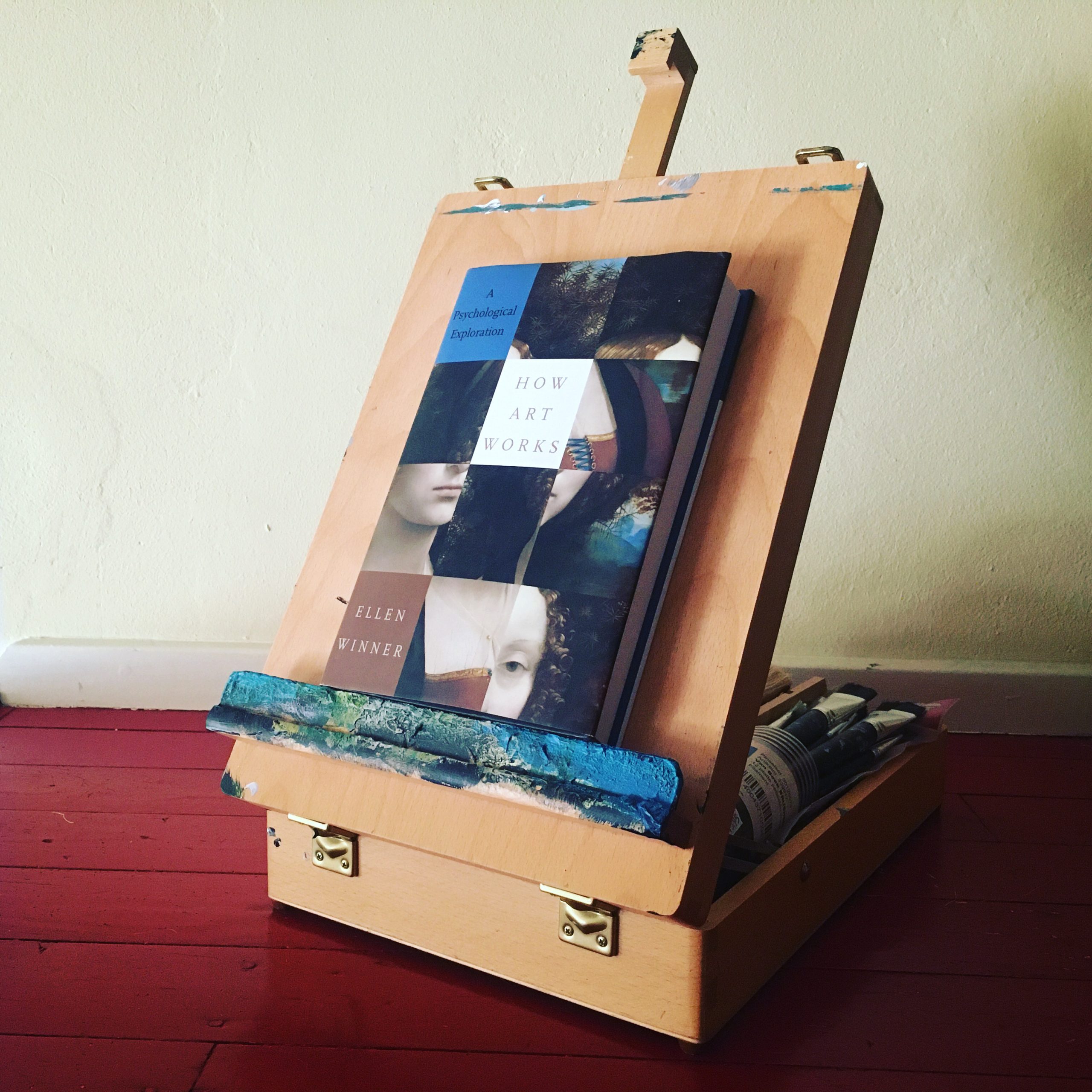"It’s very difficult to be free. For society, a free person is not good because a free person has doubts, a free person has questions – very important questions – and these very important questions necessitate time, and after this, he will act."—Pierre Liebaert, in our interview about his photo series Free Now.
Artists as Adventurers: An Interview with Ruben Jacobs
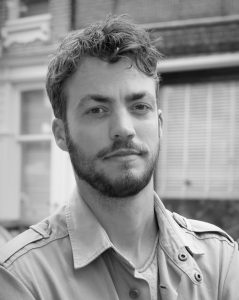 “We’re hardwired for adventure,” argues Dutch sociologist and art lecturer Ruben Jacobs. Therefore, when it comes to the pressing issues of our time, like confronting our dysfunctional relationship with tech and our alienated relationship with nature, we need to reframe our perspective: they’re not only problems, they’re also adventures. In his new book Artonauts (currently only in Dutch), Jacobs presents some artists who work as a new form of ‘-naut’, voyaging into the unknown creative plane in search of discoveries for our world. He speaks with us in this interview about the allure of adventure and the embodiment needed for new knowledge.
“We’re hardwired for adventure,” argues Dutch sociologist and art lecturer Ruben Jacobs. Therefore, when it comes to the pressing issues of our time, like confronting our dysfunctional relationship with tech and our alienated relationship with nature, we need to reframe our perspective: they’re not only problems, they’re also adventures. In his new book Artonauts (currently only in Dutch), Jacobs presents some artists who work as a new form of ‘-naut’, voyaging into the unknown creative plane in search of discoveries for our world. He speaks with us in this interview about the allure of adventure and the embodiment needed for new knowledge.
Artists have always been known to stand at the forefront, or at least the outer limits, of society. What you mean by “artonauts” and how are they different?
Well, around two years ago, I was invited to give a talk at an event about the “future of art,” and I wrote a column about my idea, introducing this concept of “artonauts.” At that time, I was fascinated with some artists who were working in different locations and with different methods, but who all had something in common. I was looking for a word to describe this, because they weren’t typical to what we think of as an “artist.” It was something really different, and I was looking to find the red thread between all these practices.
The main resemblance that I saw was with adventurers from former ages, the nauts. Essentially, these artists are acting more or less like researchers of the physical world around them. They’re behaving in some ways like a scientist, however not from a really scientific point of view. They did make use of scientific insights or knowledge, but they were researching it more from an aesthetic point of view, in the sense that they all made something that was meant to trigger the imagination of how to understand the world outside of ourselves.
In my first chapter, Nautology, I give a small history of the nauts of the 19th and 20th centuries, who were all kinds of eccentric explorers of the air, the ocean, or outer space, and really captured the public imagination. The nauts of air balloons excited people in the 19th century by giving them the bird’s eye perspective, and the train made it possible to go through the landscape very quickly, and the same in the ocean with Jacques Cousteau and the famous films he made, and of course people were terribly excited about space and many films have been made about that. The artonauts continue in that same tradition, essentially.
What is it that they’re exploring?
We live in a more or less scientific world, which is to say we’ve gotten to know and understand a lot about the Earth, but now we have come to this point that we actually don’t understand our relation to it. We are very confused about the relation we have with the Earth. I saw, in all these different practices, some kind of artistic creature who uses science but also design and technology to re-investigate the relationship with the Earth in general or focused on a specific thing, like animals for example. They all connect to the natural order or the natural world, and use imagination to re-investigate that relationship, which seemingly can no longer be understood through the data.
This is key for me: they’re not shying away from science or technology, but are actually embracing it as a way to understand the natural world even better, rather than, for example, to just go back into nature and to sit on a rock somewhere and try to feel something. That’s more a Romantic perspective, which these artists actually do not have. At least not in the classic sense.
Is it then more for you about their approach or about their discoveries?
Well, let’s take a step back. None of this is really new, in the sense that there have been artists occupied with science in the past, but over the last two centuries these fields have been separated. In earlier centuries, art and science were very close to each other. Think of Da Vinci for example, who combined disciplines, and there was no problem with that. There is now a kind of Renaissance of that approach—the crossover between disciplines—and for these artists it’s not that big of a deal but it makes them harder for others to grasp. Ok, what is this person actually doing, is it art? Is he an inventor, or what?
Art has always been a way of trying to investigate into reality, in a different way maybe than science, but in the 20th century it was also a dominant mode of expression. Like, “I want to express myself as a being and as an individual.” In this practice, that kind of approach has less importance. It’s much more about expressing their relationship with the world. It’s much more about the relationship between me and the world and not so much about me, and to me that’s interesting and inspiring. I think that’s what we need now: people asking not “Who am I?” but “Where am I?”
The subtitle of your book is ‘On Expedition in the Anthropocene,’ which places an emphasis not just on our relation with the Earth, but on the impact. Tell us more about that.
The Anthropocene reality is a new way of thinking that has been embraced by segments of both science and art. In short, we as a species have become more or less a force of nature ourselves, rivaling other forces of nature, and that means that we have to re-think the idea of Earth as something transcendent, something above us that we don’t control at all. We don’t control it, but we do have a lot of impact on it. Many have thought that this couldn’t be true—that we as a small species could really change the Earth’s course—but that idea is outdated. Of course as an individual we are nothing, but as a collective species, together with all our technology, we are changing the Earth.
That idea makes no real distinction between nature and technology, so then we have to consider: is the idea we have of “nature” still useful? Maybe the word itself keeps us from understanding this new relationship.
How do you see this concept expressed in the art?
These artonauts I’m talking about are not so much directly concerned with the Anthropocene as a concept, but they operate in that reality by investigating specific, detailed aspects of it. For example, one artist I write about is John Luther Adams, an American musician, who is concerned with translating landscapes into sound. His piece Become Ocean, which won the Pulitzer, is an attempt to reconstruct the ocean by sound, using sound waves in which three orchestras play as a triangle into each other, to try to mimic the ocean flows.
In another work, The Place Where You Go to Listen, he engineered a room in Alaska to translate all the seismographic data from the Earth system to certain sounds. There’s all this data that our senses can’t even register, for example an earthquake which is so slight you wouldn’t even perceive it, and he renders it into sounds and lights. He uses this technological mediation to make you sensitive to something you can’t normally register.
That’s what all of these artists in my opinion do: try to make you sensitive to something about Earth that we, humans, aren’t able to understand or feel or hear under normal conditions. There’s a whole black box of things we don’t understand, and these artists help us into the darkness by making it a bodily experience. Scientific data can’t really help us. We can see graphs of temperatures warming, but how should we incorporate that into our understanding of life? It takes years of training for geologists to understand the scale at which they’re working. We can hardly conceive of what “millions of years” means, and we ask normal people to get it by reading a couple of articles and seeing some charts. It doesn’t work.
It takes talent and study to be able to think in the scales of the Earth, and I think for these artonauts, imagination is a really important part that helps people reach for certain aspects of reality.
I think every artist loves the idea that someone who encounters their work has some sublime revelation, but the reality is often far less significant. What do you think we can reasonably expect from art?
You shouldn’t have too many expectations that one artwork can change your life. Normally it doesn’t. But all these works, all these little pinches, do help the collective body to arrive at a new understanding or consciousness. What I’m focusing on in particular are the artworks that when you see it or hear it, it really does something to you, even if you’re not trained as an artist.
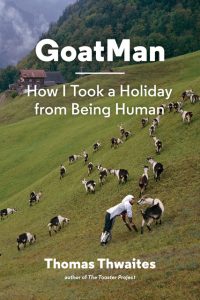 One of my favorite examples is Thomas Thwaites, a British artist and designer, who did a project called GoatMan. He went to the Swiss Alps and tried to investigate as much as possible what it would be like to be an animal, and eventually wrote a book about the experience called How I Took a Holiday from Being Human. He worked together with biologists and technologists to develop a suit that would replicate the physical experience of being a goat, and then went to live among the goats for three days. He was totally immersed, eating grass and so on, and so after a few days he was exhausted and couldn’t go on anymore.
One of my favorite examples is Thomas Thwaites, a British artist and designer, who did a project called GoatMan. He went to the Swiss Alps and tried to investigate as much as possible what it would be like to be an animal, and eventually wrote a book about the experience called How I Took a Holiday from Being Human. He worked together with biologists and technologists to develop a suit that would replicate the physical experience of being a goat, and then went to live among the goats for three days. He was totally immersed, eating grass and so on, and so after a few days he was exhausted and couldn’t go on anymore.
The thing is, there are all these pictures of him in the beautiful Swiss Alps in this really high tech, futuristic goat suit. If I show it to my grandmother or my uncle, or anyone who’s not occupied with art, they all have immediate reactions to it. They’re curious, they’re amused.
And it holds up a funny kind of mirror to us as humans. We are technological beings as part of nature, and our feature is that we are so artificial that we have to find all sorts of ways to get to understand the reality around us because we don’t have the instincts for it. Or, we have some instincts, but we have more freedom about them: we can suppress them. Whereas my dog has very basic instincts that are always on, and always at the front. It makes us a bit like a freak of nature, but it gives an advantage as well, that we have to reinvent them all the time to bypass a certain instinct poverty.
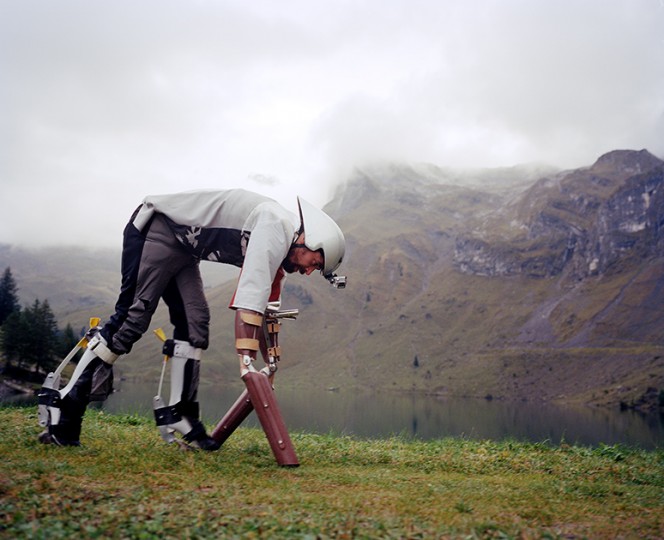
That’s for me an example of an artist that triggers all kinds of reactions immediately. Some artworks you look at and you think, “I don’t understand it at all,” and you have to read something that explains what it’s about. That’s common with modern art, and you still see this at so many museums. I like work that triggers an immediate reaction in people, even those who have no training, but also has layers built into it so that people who are trained can engage with it even deeper.
I see a connection here with what you argued in your last book, Everyone Is an Artist, which is that the qualities that used to be the domain of artists, like the pursuit of authenticity and personal expression, are now considered part of mass culture. How should we take Artonauts in this context?
Yes, so if we look at what’s happening now with those who are occupied with creative expression in any way, as opposed to being a “professional artist,” so to say, we can say that they’re mainly occupied with the self and how to express or present themselves. The artonauts have a quality that I think we could use a bit more in the world, which is being curious and investigating the world around you, and then as a by-product understanding what you are actually doing in that world, or what your position is in that world.
It boils down to a philosophical discussion on individuality, or what it means to be a person in the world. Do you really only have to pursue freedom, artistry, and autonomy? And if so, how do you achieve that? Is it just by not listening to other people, “doing your own thing,” and trying to cut yourself off from the influences around you? That’s the way we tend to think about “being yourself,” but most people don’t know what they really want, so they end up looking to the outside world for material and inspiration.
The thing is, it’s not a problem to look to the outside world to know what you think and what you want, we are social creatures. It becomes a problem when you try to ignore this. I mean: you’re actually connected all the time to forces around you (especially in the digital age), and if you don’t see those forces you’re actually less autonomous than if you see those forces and find a way to navigate them. The way I see it is: You’re in a big spider web and you can’t get out of it, but if you say all the time, “I’m not in a web,” you get blinded to all the spinning threads that steer you. To understand “I am not free” is the beginning of a relative form of freedom. That’s the paradox to me.
If you want to understand yourself, you have to first look out into the world you’re in. Then, as a result of your investigation of the world around you, its history, and all the moving parts, you gain a better understanding of what and who “you” are.
Well, to be fair, you are a sociologist, so this outside-in approach does strike me as a sociologist’s way of engaging with the world.
Of course. But I do have this perspective. People are bound to each other regardless, and even if you isolate yourself from the world around you, you’ll always be connected. Some people have more steering possibilities than others, and the question is, how does that work? When it comes to artists, they find some new perspectives by where they put their creativity, and I’m interested in how that can help us to direct our own lives.
As you mentioned earlier, one thing we can observe in society is a separation between arts and science, and so it’s actually rather intriguing that artists are now helping us to understand what’s typically been the domain of science. Especially when I think of climate change, there has been quite a bit of public distrust or open hostility for science. Let’s get a bit deeper into how art might help us with the science.
Over the last thirty or forty years, we’ve collected an enormous body of science on climate change, and we finally have a kind of wider understanding on what it all means and the gigantic consequences of it all, while at the same time there’s been a growing form of denialism. The problem is, it’s so big that it’s not possible to totally oversee, and also gives this clear message that we have to transform entirely the world we created. You see many people rejecting that message at a deep level, and therefore rejecting the science. Many others understand the message, but they feel too overwhelmed or confused by it, so they just move it to the back of their minds and go on with their lives.
Science itself, the domination of science in the modern world, has come to a certain limit. We have to figure out a new way to make a connection between what are the learnings of science and what it means for us in a practical way.
For example, if you look at the Romantics of the 18th and 19th century, which I wrote about in the first book, they did a lot of painting and writing about nature and the sublime. Nowadays, when people think about “nature,” the idea in their mind has its origins in the Romantic imagination. The imagination in the long term is a powerful thing. It really lodges itself deep in our brains and becomes difficult to change. Hard-core data doesn’t.
Ideas have to be embodied, not only rational. I think that’s what most of us experience: I understand climate change, but I don’t feel it. This year, with the European heat wave and the droughts and forest fires, people do understand it a bit more: “So, this is how it feels.” That’s different than having an intellectual understanding of it, it’s a physical, emotional understanding. Art is also a way of getting that future closer, earlier. That’s the important thing about this, too, we can’t wait for this slowly evolving process to play out. Then it’s too late.
As you just said though, even though some people seem to “know,” they’re too overwhelmed by the scale of the problem. How might the imagination trigger action?
Many scientists and journalists have been creating a picture of doomsday, or the apocalypse. That has some effect, but it is definitely not enough and, when used too much, even dangerous. Doomsday has become the dominant imagination: at some point in the future it will be hell, and we’re just moving towards it slowly. Well, if the only thing we can see in the future is darkness, it makes sense that people look away. I’d rather go into the darkness with my back to it.
Art or even visualization can help people to see another possibility, though. For example, in Almere, there has just started a project called the ReGen Village, which is a proof of concept of a self-sustaining, regenerative village model in which people live, grow their own foods, and have their own energy supplies, all built upon and regulated by modern technology, like artificial intelligence and so forth. Last year, I was trying to talk with my students (at the Utrecht University of the Arts) about these ideas in an abstract way, and they couldn’t quite get it, but when I showed them this project, it enabled them to conceive of it as one way we might possibly live in the future.
I don’t understand these things either, I need to see a picture of it. Imagination is very crucial for us to find openings, and lights in the darkness. Some ideas are very practical, like that village. Others could be more abstract, maybe even existential. If I want to talk about who we are as species, and say that we’re a strange kind of animal, it’s a bit too abstract. But if I show a picture of GoatMan, people understand what eccentric animals we are.
And that’s something else that art does, it engages with empathy. If you want to change human behavior, you have to be able to look at your own species with a certain mildness and compassion, instead of just pointing out everything that people are doing wrong. Some people, especially activists who are fighting against climate change, tend to become really skeptical about the human species—disappointed in them, like they’re useless—and people feel that on a deep level. That’s not the way to reach anyone. If you don’t believe in us anymore, why should we listen to you?
Do you have hope for the Anthropocene?
We can’t stop it altogether but we can prevent it from becoming a disaster. We have to shift away from thinking of it as only a burden, though. This is why I emphasize that a mindset to “save our asses” isn’t enough, we have to start thinking of it as an adventure.
We’re hardwired for adventure. It motivates us. This is why you still see so many people traveling by plane now, even though we know the environmental damage of flying. It’s not airplanes that we need, it’s exploration, but they just happen to be there and available. We would all be better off, however, if we redirected that urgent biological drive for adventure into something beneficial.
Scientists have done their part of the work, which is to show that there is a problem, and now others need to be involved by taking into account the way we think, beyond the science and data, to activate the collective imagination. Yes, there are some people who will always doubt the science but we don’t have to convince everyone, just the critical mass. That’s enough to make a change. The rest will follow.
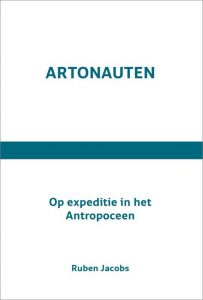
Artonauten: Op expeditie in het Antropoceen is available from publisher V2_. Learn more about Ruben Jacobs on his website.

